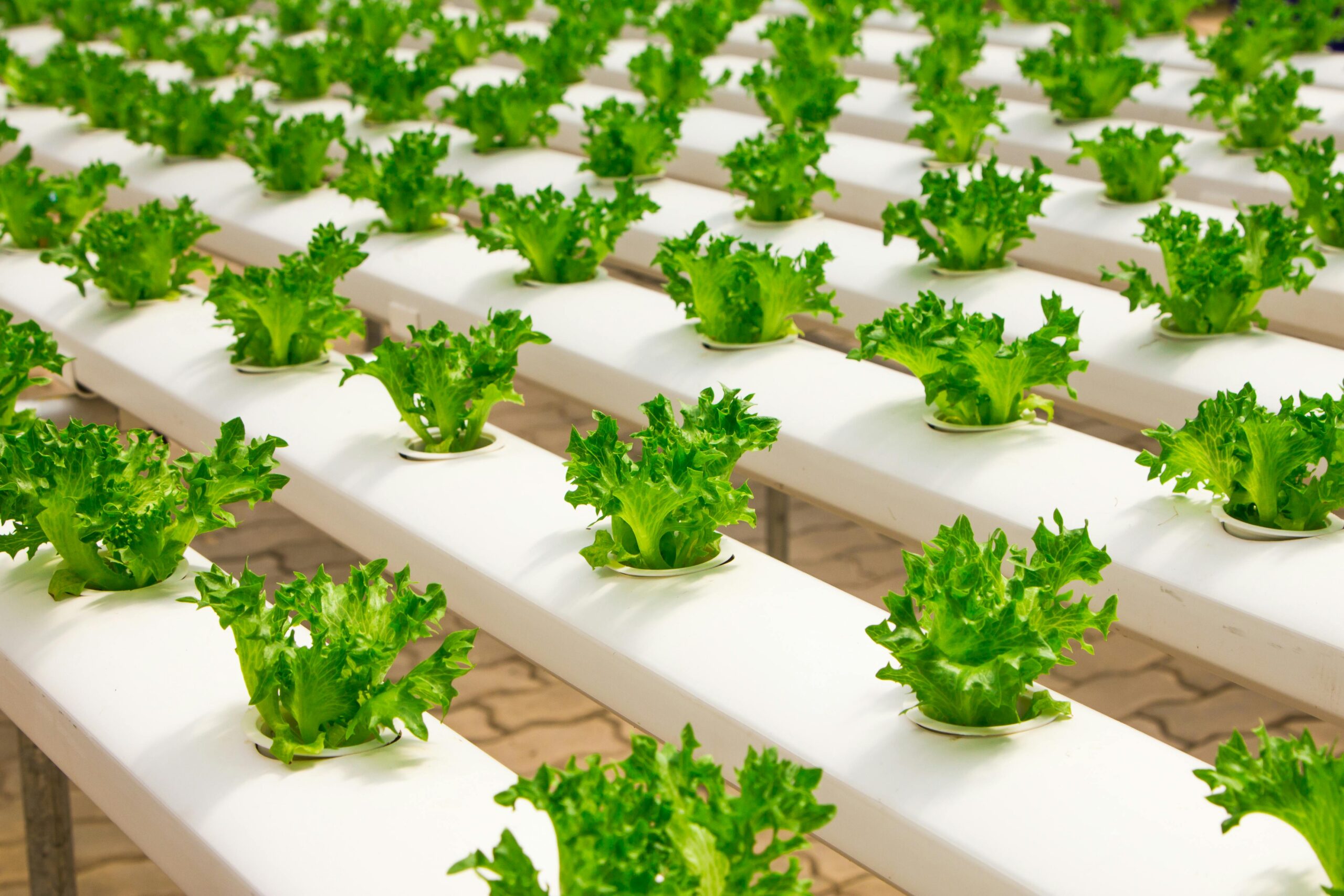Welcome to our blog where we delve into the fascinating world of vertical farming. In this article, we will discuss the revolutionary concept of vertical farming and its numerous advantages. As the global population continues to grow and arable land becomes scarcer, vertical farming offers a sustainable solution to meet the increasing demand for food. With its innovative techniques and controlled environments, vertical farming not only maximizes crop yield but also minimizes the need for pesticides, water, and land. Join us as we explore the incredible potential of vertical farming and how it is reshaping the future of agriculture.
The Concept of Vertical Farming
Vertical farming is a revolutionary approach to agriculture that involves growing crops in vertically stacked layers, utilizing limited space and optimizing resources. Unlike traditional farming methods that rely on large expanses of land, vertical farming takes advantage of vertical space, making it an ideal solution for urban areas or regions with limited arable land.
By employing innovative techniques such as hydroponics, aeroponics, or aquaponics, vertical farms can cultivate a wide range of crops in controlled environments. These environments are carefully monitored and adjusted to provide optimal conditions for plant growth, including temperature, lighting, humidity, and nutrient levels.
The Benefits of Vertical Farming
Vertical farming offers numerous advantages that make it an increasingly popular choice for sustainable agriculture:
- Maximized Crop Yield: Vertical farms can produce significantly higher yields compared to traditional farming methods. By utilizing vertical space, multiple layers of crops can be grown, resulting in greater productivity per square foot.
- Year-Round Cultivation: Vertical farming is not limited by seasonal changes or adverse weather conditions. With controlled environments, crops can be grown year-round, ensuring a consistent and reliable food supply.
- Water Efficiency: Vertical farming employs efficient irrigation systems that recycle water, significantly reducing water consumption compared to conventional agriculture. This makes it a sustainable solution in regions facing water scarcity.
- Reduced Dependency on Pesticides: In a controlled environment, pests and diseases can be managed more effectively, reducing the need for harmful pesticides. Vertical farming relies on integrated pest management techniques, ensuring healthier and chemical-free produce.
- Minimized Land Usage: Vertical farming requires less land compared to traditional agriculture. As a result, it can be implemented in urban areas, transforming unused spaces such as warehouses, rooftops, or abandoned buildings into productive farms.
With these benefits, vertical farming presents a promising solution to address the challenges of food security, environmental sustainability, and urbanization. In the next sections, we will explore the different techniques used in vertical farming and delve deeper into its environmental impact and potential for the future of agriculture.
Techniques in Vertical Farming
Vertical farming utilizes various techniques to optimize plant growth and maximize efficiency. Let’s take a closer look at some of the key methods:
1. Hydroponics
Hydroponics is a popular technique in vertical farming where plants are grown without soil. Instead, the plants are placed in a nutrient-rich water solution that provides them with all the necessary minerals for growth. This method allows for precise control over nutrient levels and reduces water usage compared to traditional soil-based farming.
2. Aeroponics
Aeroponics takes the concept of soilless cultivation a step further by suspending plant roots in the air and misting them with a nutrient-rich mist. This method provides excellent aeration and nutrient absorption, leading to faster growth and higher yields. Aeroponics also minimizes water usage and eliminates the need for soil or growing media.
3. Aquaponics
Aquaponics combines hydroponics and aquaculture, creating a symbiotic system where plants and fish coexist. In this method, fish waste provides nutrients for the plants, while the plants naturally filter and purify the water for the fish. It’s a sustainable and efficient approach that minimizes water usage and creates a self-sustaining ecosystem.
4. Vertical Aeroponic Tower Gardens
Vertical aeroponic tower gardens are vertical structures that house multiple layers of crops. Plants are placed in individual pockets or trays, and their roots are misted with a nutrient-rich solution at regular intervals. This method maximizes space utilization and allows for a high density of plants, resulting in increased crop productivity.
5. LED Lighting
LED (Light Emitting Diode) lighting plays a crucial role in vertical farming, providing the necessary light spectrum for plant growth. LED lights are energy-efficient, emit less heat, and can be precisely tuned to match the specific needs of different crops. By simulating natural sunlight, LED lighting enables year-round cultivation and enhances photosynthesis efficiency.
These techniques, among others, are continuously evolving and being refined to improve crop yields, resource efficiency, and sustainability in vertical farming. In the next section, we will explore the environmental impact of vertical farming and how it contributes to a greener future.
Environmental Impact of Vertical Farming
Vertical farming offers several environmental benefits that make it a sustainable and eco-friendly alternative to traditional agriculture:
1. Water Conservation
Vertical farming employs efficient irrigation systems that recycle water, drastically reducing water consumption compared to conventional farming. By reusing water and minimizing evaporation, vertical farms can save a significant amount of this precious resource.
2. Reduced Land Usage
Vertical farming requires less land compared to traditional agriculture, allowing for the conservation of natural habitats and preservation of biodiversity. By utilizing vertical space in urban areas, it helps prevent the conversion of valuable ecosystems into farmland.
3. Lower Carbon Footprint
Vertical farms can be located close to urban centers, reducing transportation distances and the associated carbon emissions. Additionally, these farms can utilize renewable energy sources such as solar panels, further reducing their carbon footprint and reliance on fossil fuels.
4. Minimized Pesticide Use
With controlled environments and integrated pest management techniques, vertical farming significantly reduces the need for pesticides. This not only benefits human health by providing chemical-free produce but also helps protect pollinators and other beneficial organisms.
5. Year-Round Production
By enabling year-round cultivation, vertical farming reduces the need for importing out-of-season produce from distant locations. This reduces the energy consumption and emissions associated with long-distance transportation and storage.
With its sustainable practices and minimal environmental impact, vertical farming holds great promise for addressing the challenges of food production in a rapidly urbanizing world. In the next section, we will explore the future potential and advancements in vertical farming technology.
The Future of Vertical Farming: Advancements and Potential
As technology continues to advance, vertical farming is poised to play a significant role in the future of agriculture. Here are some exciting advancements and potential areas of growth:
1. Automation and Robotics
Automation and robotics are transforming vertical farming, making it more efficient and cost-effective. Robots can perform tasks such as planting, harvesting, and monitoring crop health, reducing the need for manual labor and increasing productivity.
2. Artificial Intelligence and Data Analytics
Artificial intelligence (AI) and data analytics are being integrated into vertical farming systems to optimize crop growth. AI algorithms can analyze data on environmental conditions, nutrient levels, and plant health, enabling precise adjustments to maximize yields.
3. Vertical Farming in Urban Areas
Vertical farming is particularly suited for urban areas, where land is limited. As cities continue to grow, we can expect to see more vertical farms integrated into buildings, utilizing unused spaces such as rooftops, warehouses, and even underground facilities.
4. Integration with Renewable Energy
Vertical farms can be designed to operate using renewable energy sources such as solar or wind power. By harnessing clean energy, vertical farming can further reduce its carbon footprint and contribute to a more sustainable agricultural system.
5. Collaboration and Knowledge Sharing
The future of vertical farming depends on collaboration and knowledge sharing among researchers, engineers, and farmers. Through collaboration, best practices can be developed, and innovations can be shared globally, accelerating the growth and adoption of vertical farming.
With these advancements and the ongoing research in vertical farming, it holds the potential to revolutionize food production, improve food security, and mitigate the environmental impacts of traditional agriculture.
In conclusion, vertical farming offers a sustainable and efficient solution for the challenges facing modern agriculture. With its innovative techniques, controlled environments, and minimal resource usage, it has the potential to transform the way we grow food. Embracing vertical farming can pave the way for a greener and more resilient future in feeding our growing global population.
Challenges and Considerations in Vertical Farming
While vertical farming offers numerous benefits, it also faces certain challenges and considerations that need to be addressed for its widespread adoption:
1. Initial Investment Costs
Setting up a vertical farm can involve significant upfront costs, including infrastructure, lighting systems, and automation technology. However, as technology advances and economies of scale come into play, these costs are expected to decrease, making vertical farming more accessible.
2. Energy Consumption
Vertical farms require substantial energy inputs to power lighting, irrigation systems, and climate control. It is crucial to optimize energy efficiency through the use of energy-saving technologies and renewable energy sources to minimize the environmental impact.
3. Skilled Workforce
Running a vertical farm requires specialized knowledge and expertise in areas such as plant science, technology, and data analysis. Ensuring a skilled workforce is available to operate and manage vertical farms is essential for their success.
4. Crop Selection and Diversity
While many crops can be grown successfully in vertical farms, certain plants with extensive root systems or large growth requirements may not be suitable. Ensuring a diverse range of crops can be grown in vertical farms is important to provide a variety of nutritious food options.
5. Regulatory Considerations
Vertical farming may require regulatory frameworks and standards to ensure food safety, quality control, and environmental sustainability. Collaborations between industry stakeholders and policymakers are necessary to develop appropriate regulations that support the growth of vertical farming.
By addressing these challenges and considerations, vertical farming can continue to evolve and overcome barriers, ultimately becoming a mainstream method of food production.
In conclusion, vertical farming holds immense potential to revolutionize agriculture, offering sustainable solutions to global food challenges. With ongoing advancements, increased knowledge sharing, and collective efforts, vertical farming can contribute to a greener, more resilient, and secure future for our food supply.
In conclusion, vertical farming is a groundbreaking approach to agriculture that holds tremendous promise for the future. By utilizing vertical space, controlled environments, and innovative techniques, vertical farming offers numerous advantages such as maximized crop yield, year-round cultivation, water efficiency, reduced pesticide use, and minimized land usage. It also boasts significant environmental benefits, including water conservation, reduced carbon footprint, and the preservation of natural habitats.
While there are challenges to overcome, such as initial investment costs, energy consumption, and the need for a skilled workforce, ongoing advancements in technology, automation, and data analytics are driving the growth of vertical farming. Collaboration between industry stakeholders and policymakers is crucial to address regulatory considerations and ensure food safety and quality control.
As we face the pressing issues of food security, environmental sustainability, and urbanization, vertical farming emerges as a sustainable solution that can transform our agricultural practices. By embracing vertical farming, we can create a greener and more resilient future, ensuring a consistent and nutritious food supply for generations to come.

